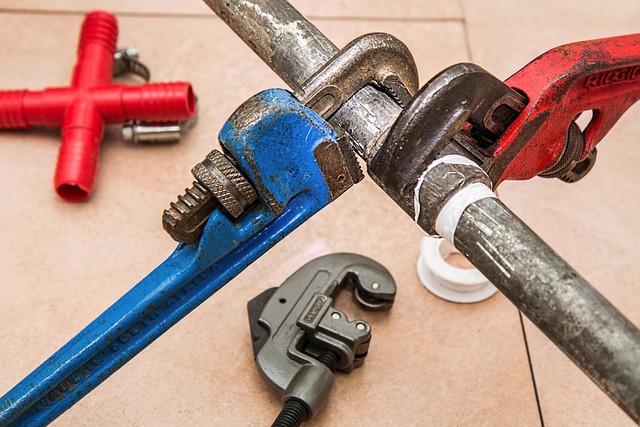Concrete stem walls in residential foundations are prone to environmental damage and structural forces leading to cracks, chips, and spalls. Timely repair is crucial to prevent escalating issues. Inspection identifies defects like loose joints or fractures, guiding tailored repair plans. Repair methods range from repoint work for minor damage to structural concrete repairs for extensive issues. Preparation involves assessing damage, clearing debris, and removing old sealants. Mixing and applying repair mortar seamlessly blends with existing concrete. Cleaning, filling gaps with flexible epoxy, and reinforcing larger cracks ensure long-lasting stability. Avoiding superficial or subpar repairs is key; using quality materials and expert techniques preserves the foundation's integrity. Proactive maintenance includes regular inspections, debris removal, and waterproofing to prevent future damage.
Stem wall concrete repair is a critical component of residential foundation maintenance. These walls, crucial for structural integrity, are prone to damage from moisture intrusion, settlement cracks, and other environmental factors. Understanding common types of concrete damage and implementing effective repair methods ensures longevity and stability of your home’s foundation. This guide covers everything from inspection to maintaining your repaired stem wall, empowering homeowners with the knowledge for successful residential foundation repair.
Understanding Stem Wall Concrete Damage

Concrete walls, especially those forming the foundation of residential properties, are susceptible to damage over time due to various environmental factors and structural stresses. Stem wall concrete repair is a critical aspect of residential foundation repair, addressing issues that can compromise the integrity of a home’s structural support. Cracks, chips, and spalls are common signs of stem wall deterioration, often caused by frost heave, settlement, or differential hydration during the concrete setting process.
These defects may initially appear as subtle cracks but can expand and lead to more significant structural problems if left unaddressed. Proper evaluation and timely repair are crucial to prevent further damage and ensure the longevity of the foundation. By understanding the specific causes of stem wall damage, homeowners and professionals can implement effective solutions tailored to each unique situation, ultimately safeguarding the stability of residential properties.
Inspection: Identifying Repair Needs

When addressing stem wall concrete repair in residential foundation repair, a thorough inspection is paramount. This initial step involves meticulously examining the stem walls for any signs of damage, cracks, or instability. A professional will assess the overall structural integrity, taking note of factors like settlement, heave, or water intrusion that might have contributed to the deterioration.
Identifying specific repair needs requires close observation and knowledge of stem wall construction. The inspector looks for issues such as loose or missing mortar joints, fractures in the concrete, or bulges or gaps indicating potential structural weaknesses. Understanding these defects is crucial for developing a tailored plan to address them effectively, ensuring the longevity and stability of the residential foundation.
Types of Concrete Repair Methods

Concrete repair methods for stem walls in residential foundation repair can vary depending on the extent of damage and specific needs. One common approach is repoint work, which involves replacing individual broken or missing bricks or blocks with new ones, restoring structural integrity and aesthetic appeal. This method is suitable for minor to moderate damage and can be done quickly, minimizing disruption to the property.
For more extensive repairs, structural concrete repair techniques such as carbon fiber reinforcement or epoxy injection are employed. These methods address underlying issues like cracks, settlement, or water infiltration by strengthening existing concrete and sealing vulnerabilities. While more involved and often requiring professional expertise, these techniques offer long-lasting solutions for residential foundation repair, ensuring the longevity of stem walls and the overall structural stability of homes.
Preparing the Area for Repairs

Before beginning any concrete repair, especially in stem wall or residential foundation repair situations, careful preparation is key. The first step involves assessing the extent of damage and ensuring safety. This includes inspecting for loose or damaged concrete, cracks, or signs of instability, as these could indicate more severe structural issues that require professional attention.
Once the area is deemed safe, clear it of any debris, vegetation, or obstacles. Remove any old caulk, sealants, or coatings that might interfere with new repairs. Proper cleaning and preparation will ensure better adhesion for repair materials, promoting long-lasting results in residential foundation repair.
Mixing and Applying Repair Mortar

Mixing and applying repair mortar is a crucial step in stem wall concrete repair, integral to ensuring long-lasting stability for residential foundation repair projects. The process begins with carefully measuring and mixing the correct proportions of cement, sand, and water to create a strong, yet workable, mortar. This blend should be consistent throughout to guarantee even strength distribution.
Once mixed, the repair mortar is meticulously applied using trowels or brushes, filling in any gaps or cracks within the stem wall. The mortar should be pushed deep into the affected areas to provide comprehensive support. Proper application ensures that the repair seamlessly blends with the existing concrete, enhancing the overall structural integrity of the residential foundation without compromising aesthetics.
Filling Cracks and Holes Effectively

When it comes to stem wall concrete repair, addressing cracks and holes effectively is paramount for maintaining a robust residential foundation. The first step involves thoroughly cleaning the affected area to remove any debris or loose concrete. This preparation ensures that new material adheres properly. After cleaning, fill the gaps with a high-quality, flexible masonry epoxy or polyurethane based filler designed specifically for concrete repair. These materials expand and contract with the surrounding concrete, providing long-lasting durability.
For larger cracks and holes, it might be necessary to use a combination of mesh reinforcement and filler. The mesh acts as an additional layer of strength, preventing further damage while the filler provides a smooth, cohesive surface. Properly filled and repaired stem walls not only enhance structural integrity but also prevent water infiltration, which could lead to more serious foundation issues in the long run, thereby emphasizing the importance of residential foundation repair.
Ensuring Long-Lasting Results

When it comes to stem wall concrete repair, achieving long-lasting results is paramount for any residential foundation repair project. The key lies in meticulous planning and execution, ensuring every step aligns with industry best practices. This includes accurately assessing the extent of damage, utilizing high-quality materials that match the original mix, and employing expert techniques such as pressure washing to remove debris before application.
Additionally, proper sealing and waterproofing are essential to prevent future deterioration. By integrating these measures, homeowners can expect their stem wall repairs to endure the test of time, safeguarding against structural vulnerabilities and preserving the integrity of their residences. Remember, in residential foundation repair, a job well done means setting the stage for a solid, lasting solution.
Common Mistakes to Avoid During Repair

When undertaking stem wall concrete repair, homeowners and contractors alike should be aware of potential pitfalls that can compromise the effectiveness of the fix. A common mistake is failing to assess the full extent of the damage; superficial repairs might seem quick and easy but often don’t address underlying structural issues. It’s crucial to thoroughly inspect the stem wall and surrounding area for cracks, bulges, or any signs of settlement before beginning work.
Another frequent error is using subpar materials or improper techniques. Using low-quality concrete or failing to follow best practices during the repair process can lead to future damage. Ensuring that all repairs are done with durable, high-quality materials and employing expert techniques specific to stem wall reinforcement is essential for long-lasting Residential Foundation Repair.
Maintaining Your Repaired Stem Wall

After successfully repairing your stem wall, it’s crucial to implement a maintenance plan to ensure longevity and prevent future damage. Regular inspection is key; check for any signs of cracking, bulging, or water seepage around the repair area. Early detection of issues can make all the difference in the effectiveness of your residential foundation repair.
Maintain the area by keeping it clear of debris and ensuring proper drainage. Fix any leaks immediately to avoid moisture intrusion, which can compromise the repair work. Consider sealing the stem wall with a waterproof compound to create an extra barrier against the elements. Regular maintenance will not only preserve the integrity of your stem wall but also extend the life of your entire residential foundation repair.
